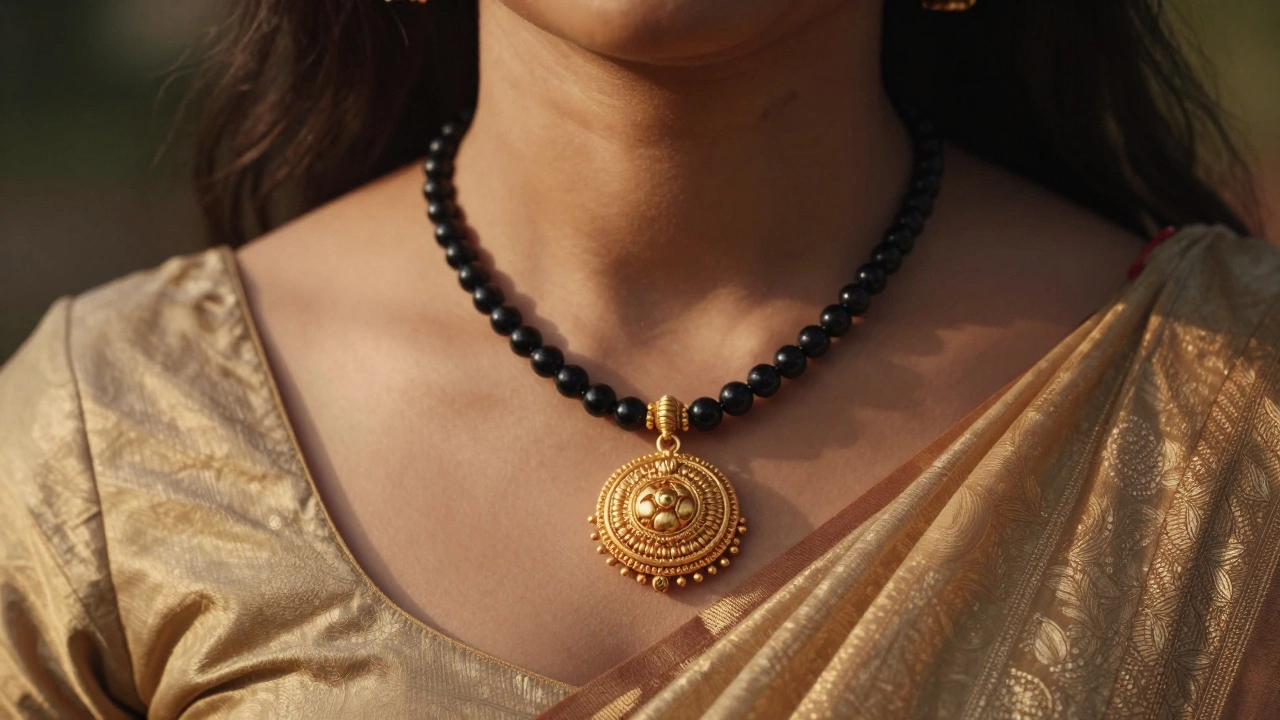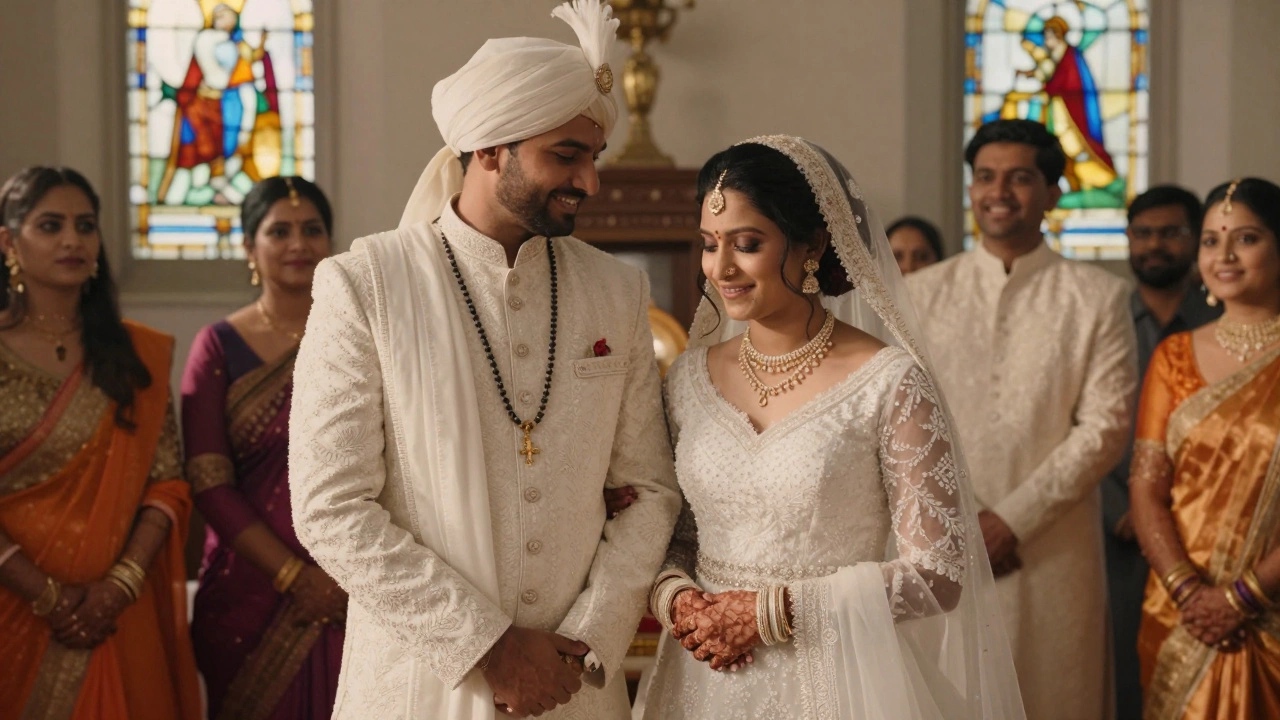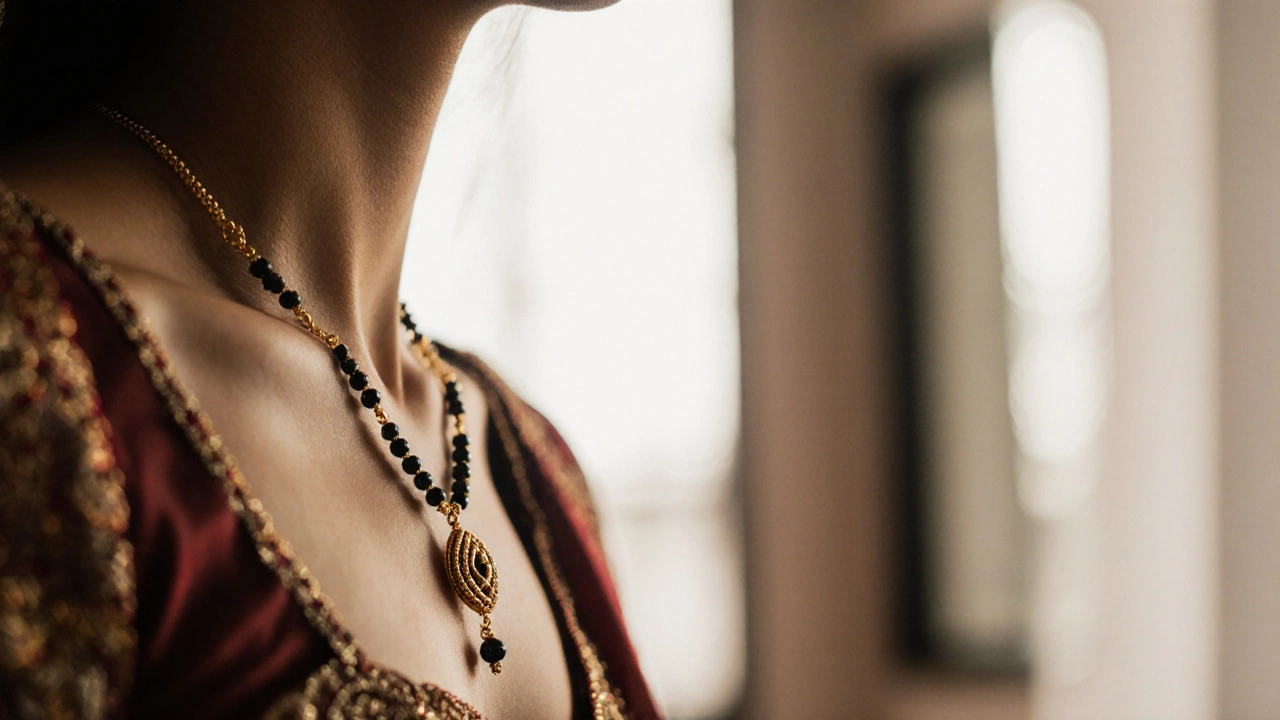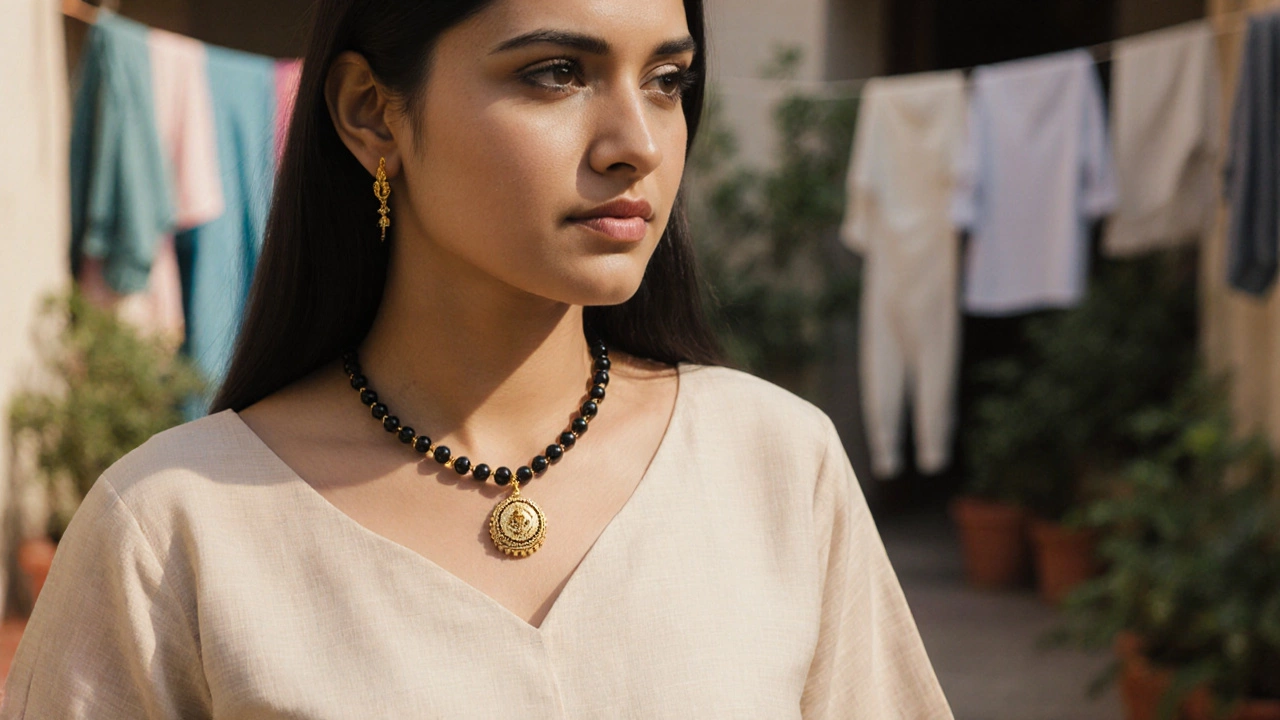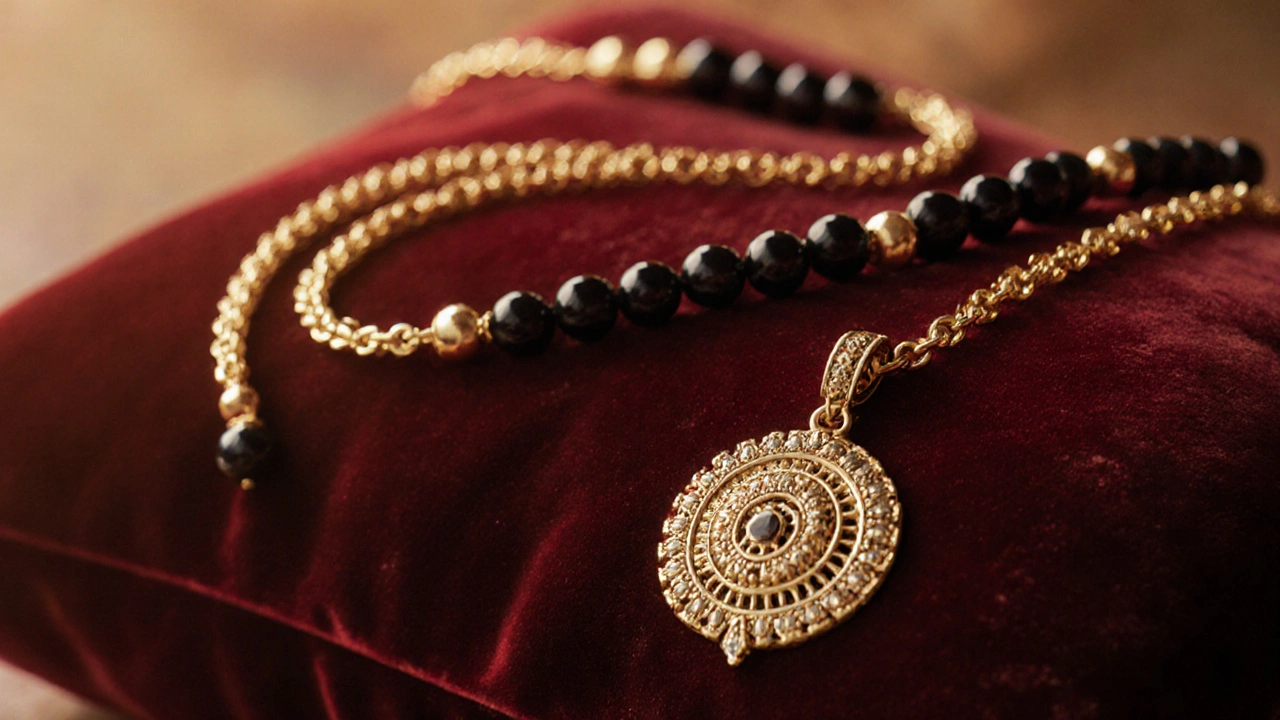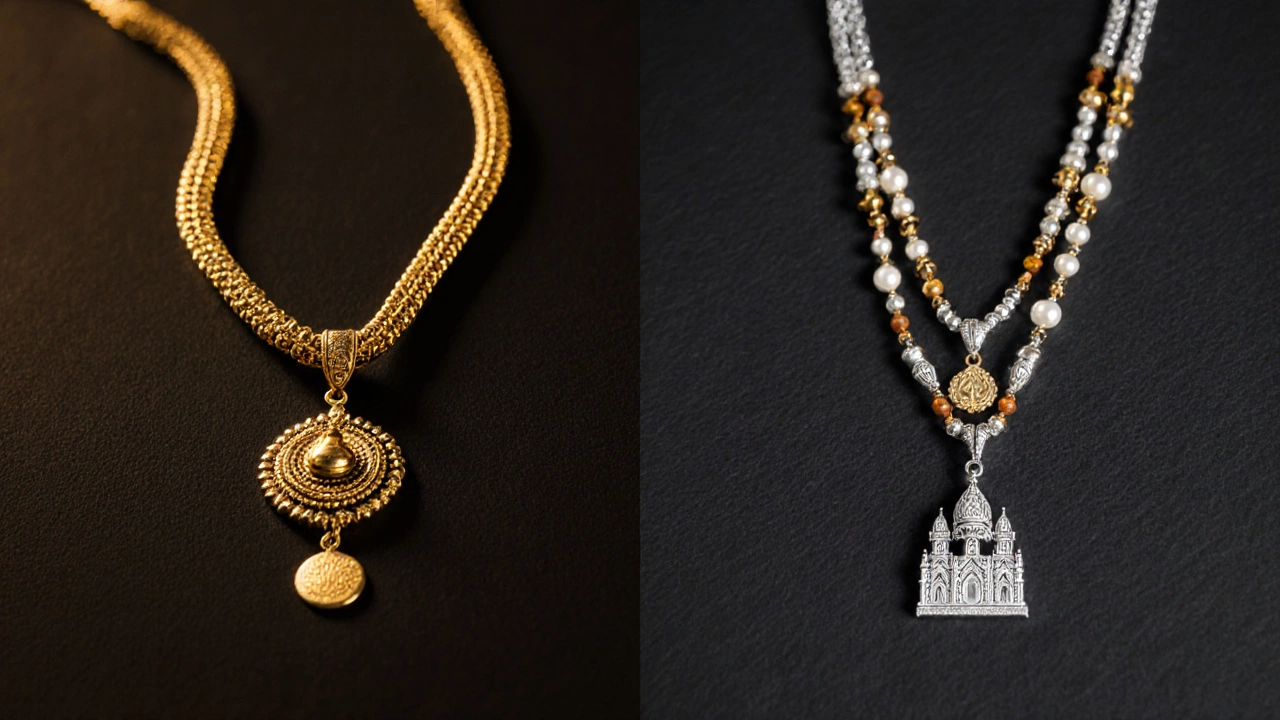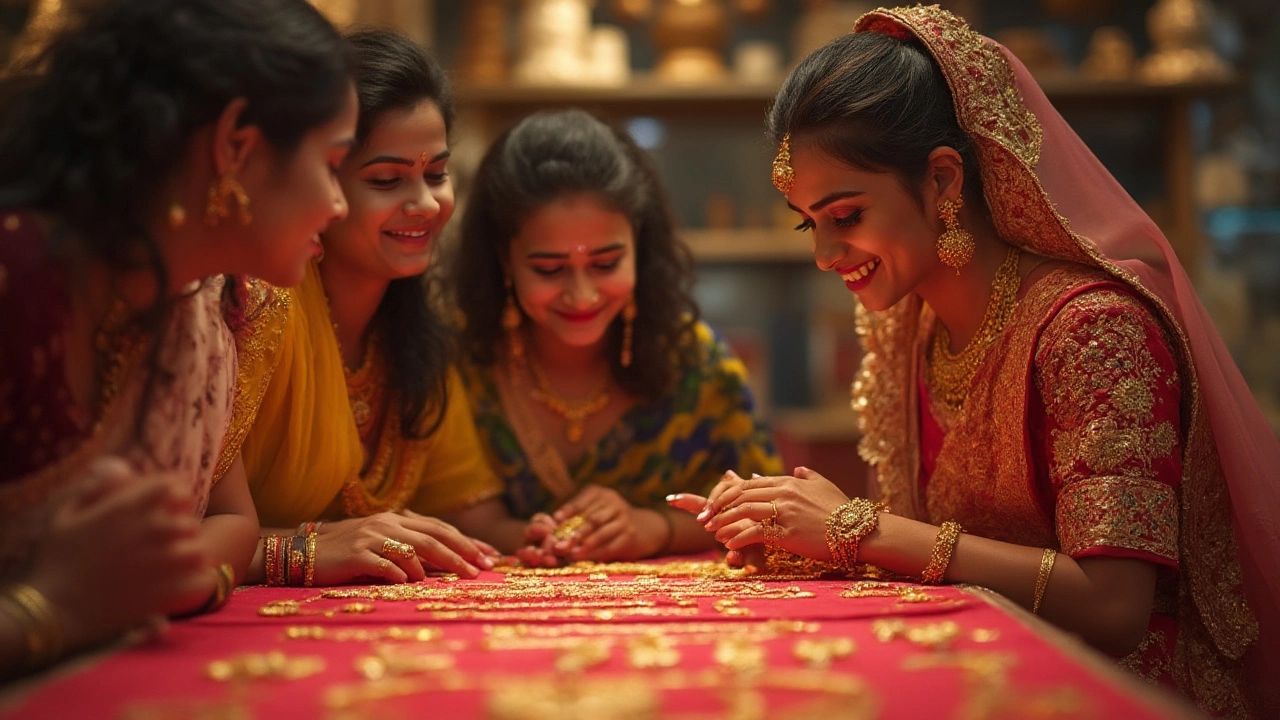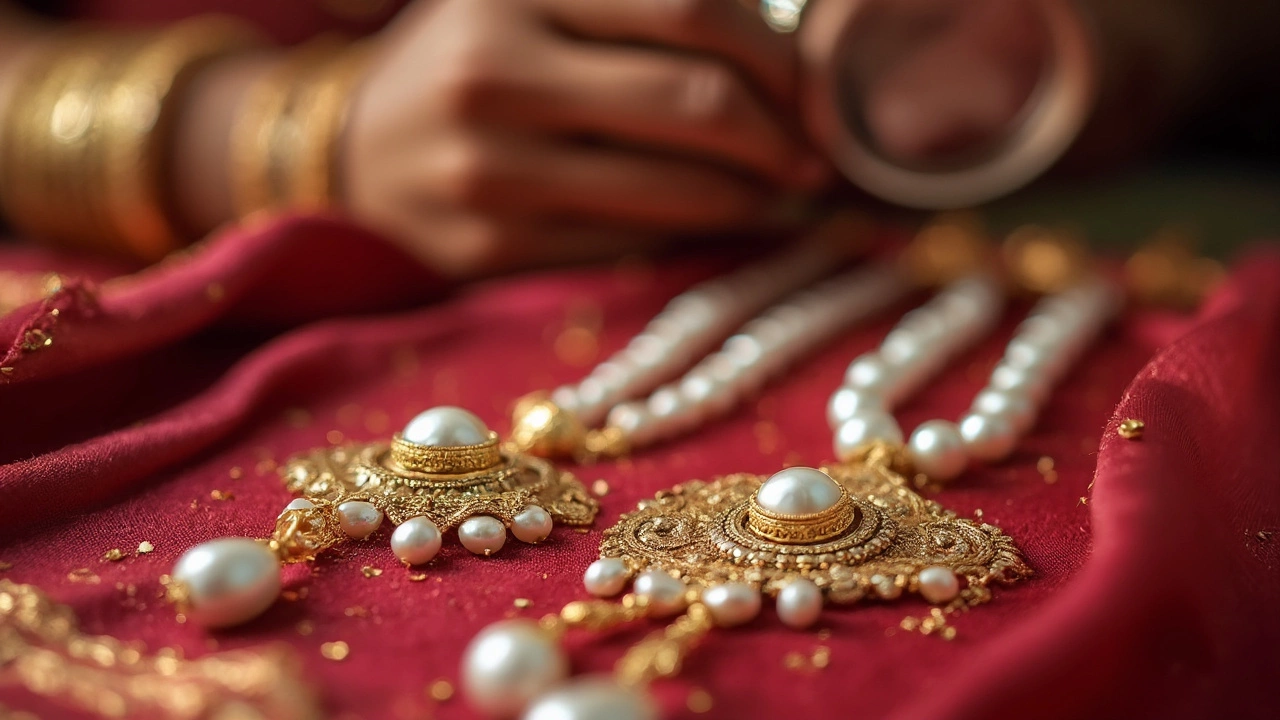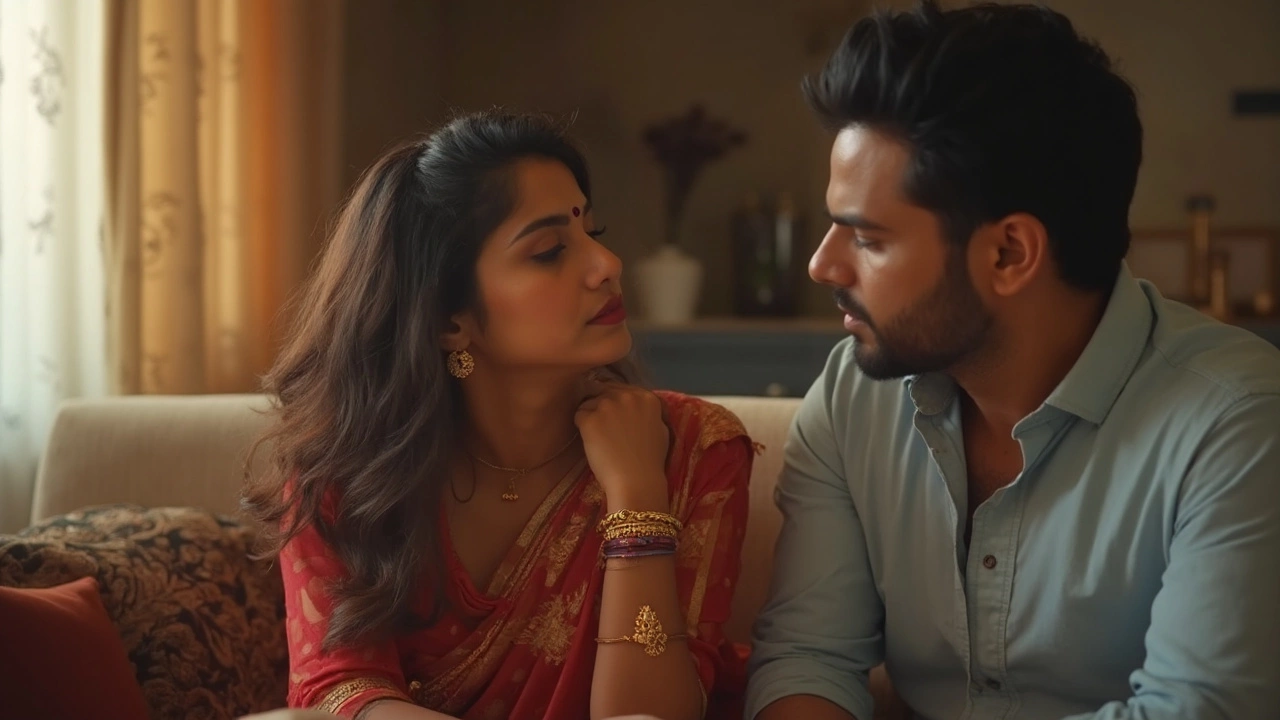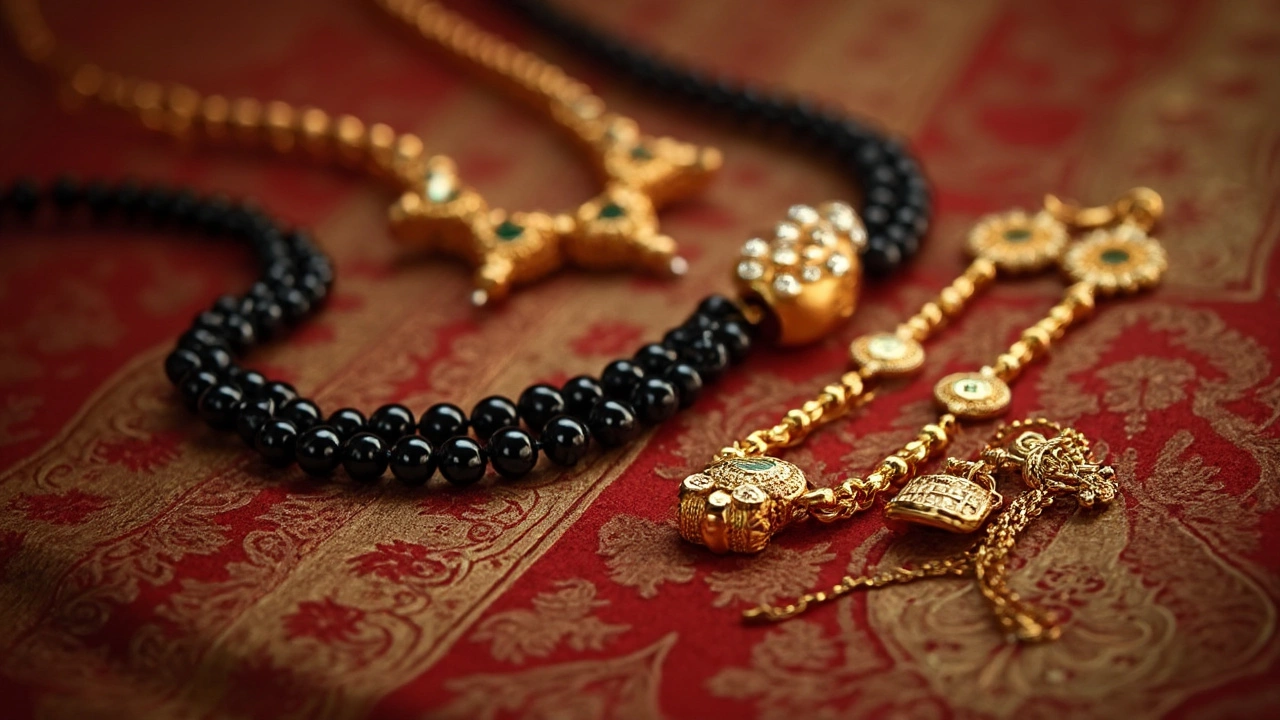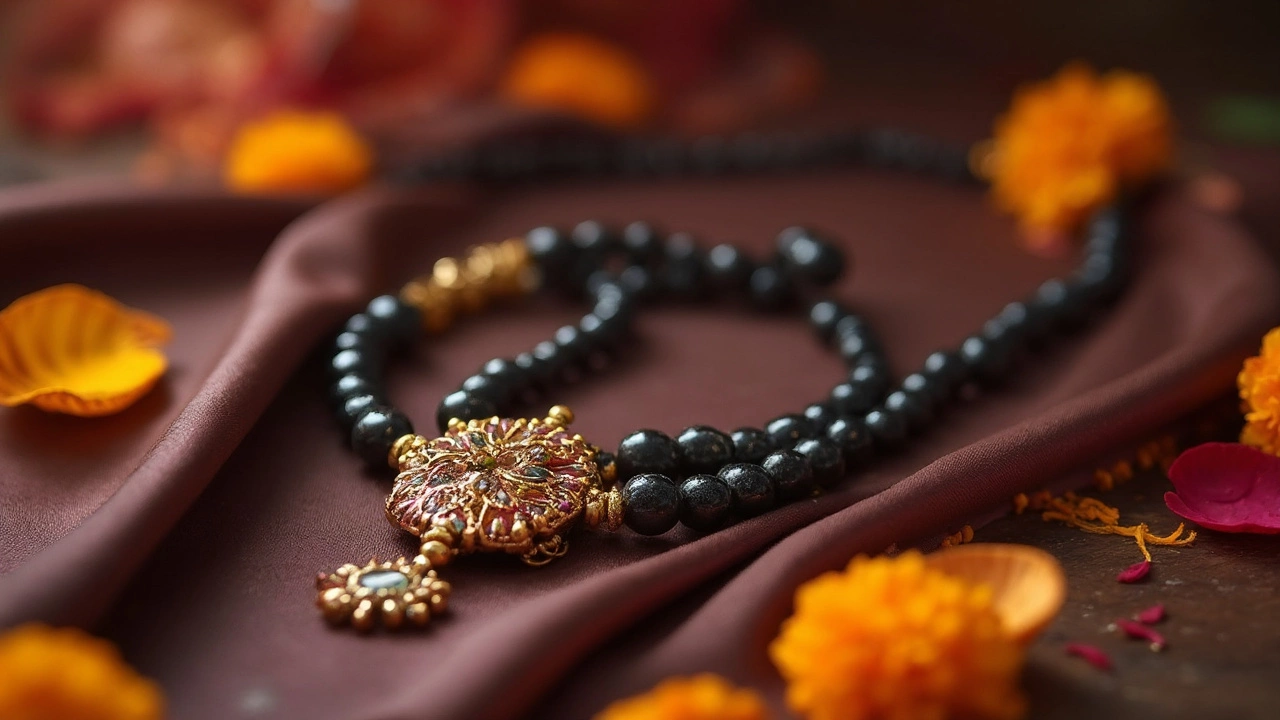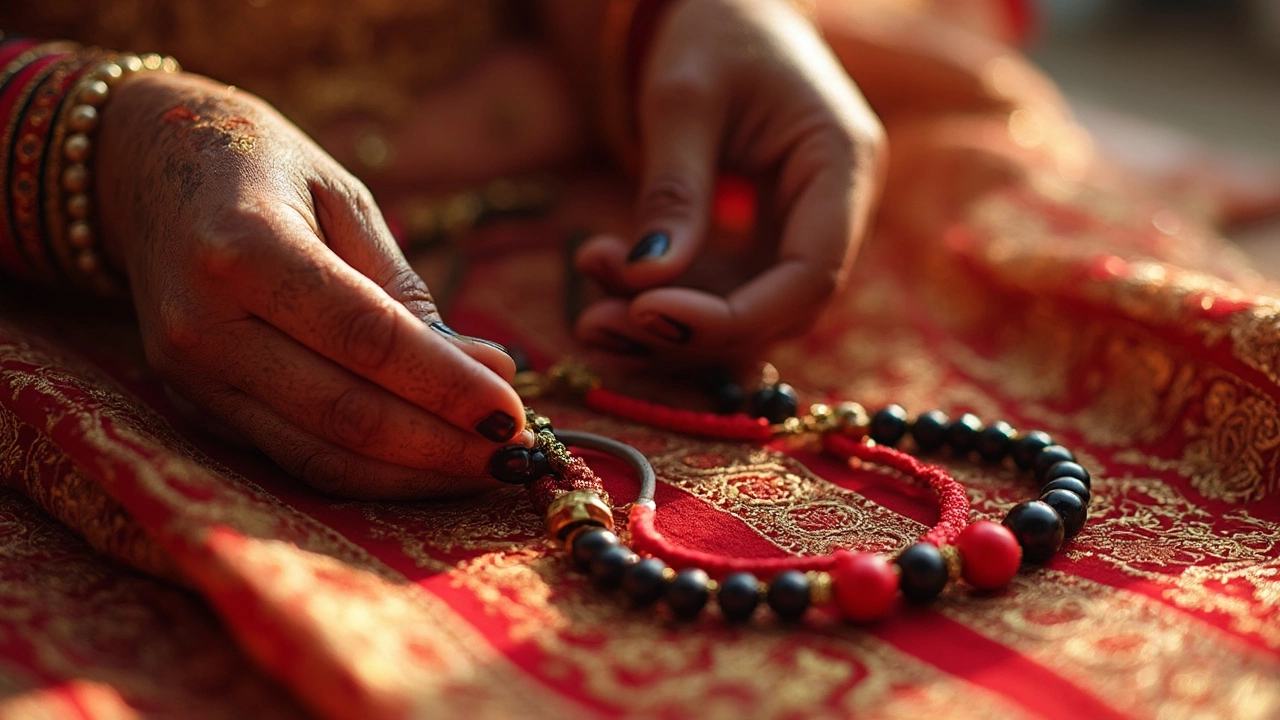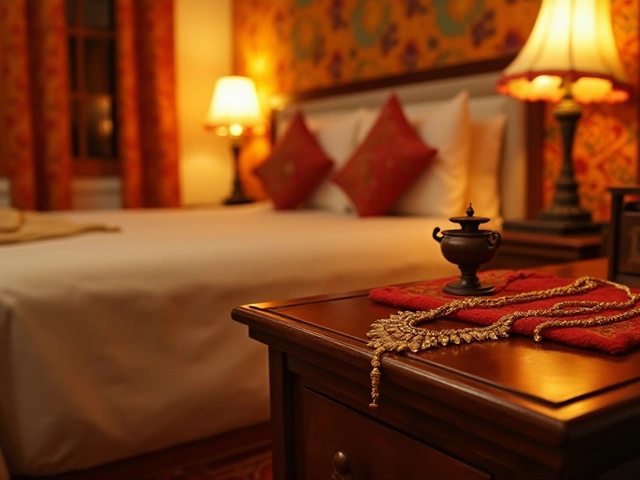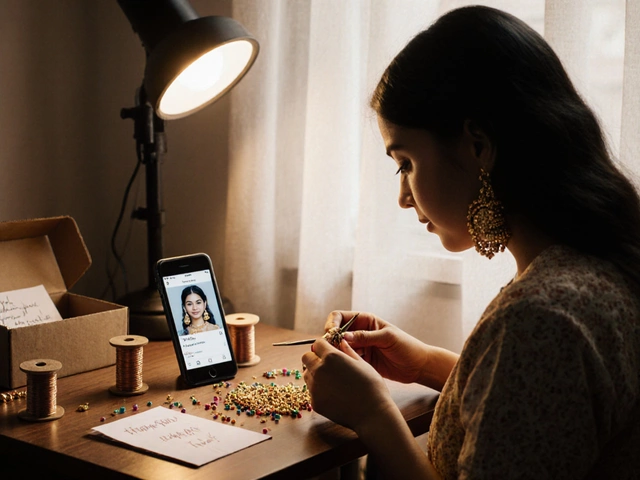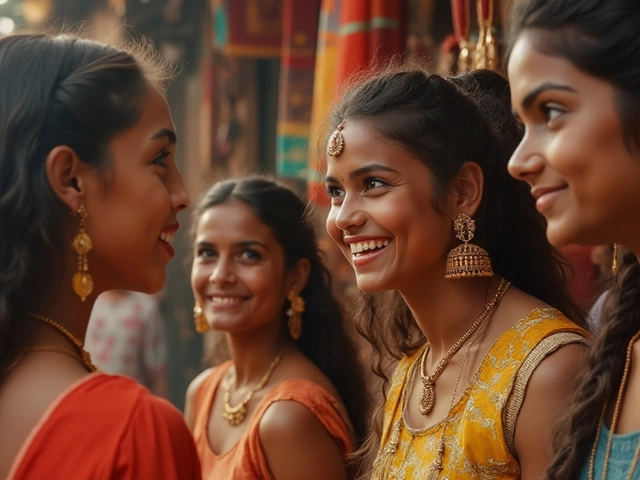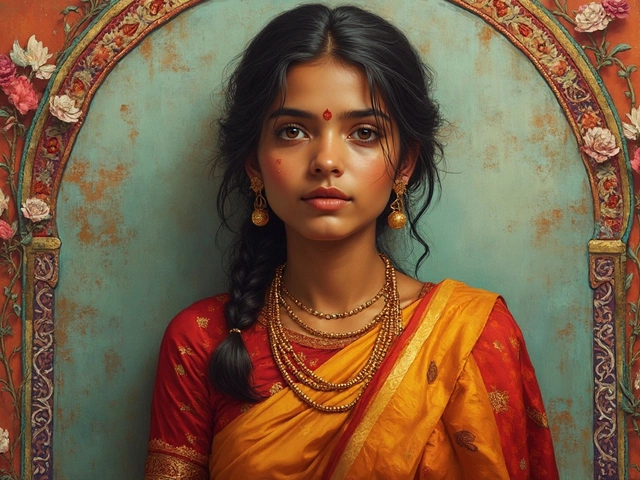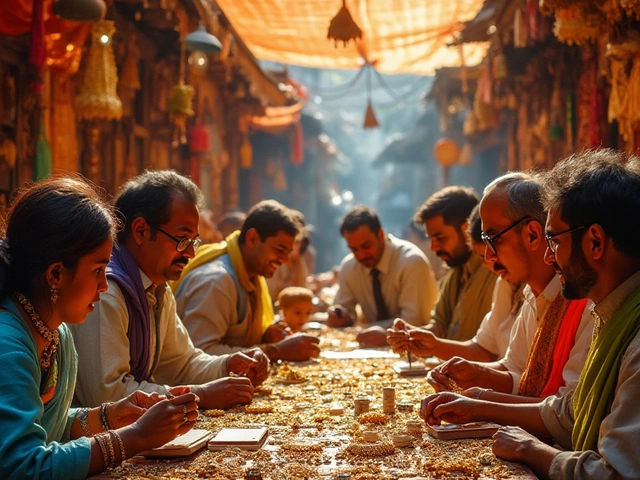Mangalsutra Designs: Choose the Right Style for You
If you’re scrolling through endless jewelry options, the mangalsutra can feel both exciting and confusing. It’s not just a necklace; it’s a symbol of love, tradition, and personal style. Below you’ll find quick pointers that help you pick a design you’ll wear happily every day.
Traditional Designs You’ll Love
Classic mangalsutras usually feature a gold chain with black or red beads, sometimes called shakha or moti. The beads aren’t just decorative – they’re believed to bring protection and longevity. If you want a design that stays close to cultural roots, look for a 22‑carat gold chain, a simple lock‑type clasp, and a single pendant that matches your family’s customs.
When you choose beads, think about size and material. Black beads are often made from basalt or polished wood, while red beads can be coral or glass. Both are lightweight, so the necklace stays comfortable even if you wear it all day. If you’re unsure about bead quality, ask the seller to show you the bead under a magnifier – you should see a smooth, even surface without cracks.
Modern Twists on the Classic Mangalsutra
Today many designers blend gold with diamonds, white gold, or even silver. A popular trend is a slimmer chain paired with a small diamond pendant that adds sparkle without looking flashy. If you prefer a minimalist look, try a 14‑carat gold chain with a single pearl or a tiny square pendant – these options work well with office wear and still honor tradition.
For a bold statement, consider designs that mix colors: a gold chain with alternating red and black beads, or a multi‑strand style featuring tiny gold links and a central gemstone. These modern takes keep the symbolic meaning while letting you express your personality.
Whichever design you pick, pay attention to the chain’s thickness. A 2‑mm chain is sturdy enough for daily use, while a 1‑mm chain looks delicate but may need extra care. Also, check the clasp – a secure push‑back or spring‑ring clasp prevents accidental loss.
Before you buy, set a budget and decide what matters most: purity, bead type, or pendant style. Gold purity is usually marked as 22K or 18K; higher purity means richer color but can be softer. If you need extra durability, 18K gold with a thicker chain works well.Finally, think about how you’ll care for your mangalsutra. Store it in a soft pouch away from humidity, and wipe it with a dry cloth after wearing. A quick polish once a month keeps the gold shining and the beads looking fresh.
Ready to shop? Browse our collection, filter by gold purity, bead color, or pendant type, and you’ll find a mangalsutra that matches both your heart and your wardrobe.
Why Do Women Wear Mangalsutra Around the Neck?
The mangalsutra is more than jewelry - it's a sacred symbol worn around the neck to represent marriage, protection, and identity in Hindu culture. Learn why this tradition endures across generations and regions.
Why Do Christians Wear Mangalsutra? Understanding the Cultural Shift in Indian Weddings
Many Christian brides in India wear the mangalsutra not for religion, but as a cultural symbol of marriage and family belonging. Learn why this tradition is changing and how it reflects modern Indian identity.
Why Are There Three Knots in Mangalsutra? The Meaning Behind the Design
The three knots in a mangalsutra symbolize commitment, family, and self-preservation in marriage. Rooted in ancient tradition, they’re more than decoration-they’re a living promise. Discover what they truly mean and how modern women are redefining their significance.
What Is the Ideal Length of a Mangalsutra? Practical Guide for Comfort and Tradition
The ideal mangalsutra length is typically 18 inches, balancing tradition and comfort. Choose based on your body type, neckline, and daily routine. Adjustable chains and lighter pendants make daily wear easier.
Why Black Beads Are Used in Mangalsutra - Symbolism, History & Style
Explore why black beads appear in mangalsutra, their symbolism, history, material options, and care tips. Learn to pick a meaningful design that blends tradition and style.
North vs South Indian Mangalsutra: Key Differences Explained
Discover how North Indian and South Indian mangalsutras differ in design, material, motifs, and cultural meaning, plus buying tips and care advice.
How to Choose the Perfect Mangalsutra: Modern Styles, Gold Designs, and Buying Tips
Confused about picking a mangalsutra? Here’s a practical guide to choosing the perfect design, chain, and pendant—whether you prefer gold, diamonds, or something modern.
Moti Types in Mangalsutra: What are the Two Main Varieties?
Curious about the types of moti (pearls) found in mangalsutras? This article breaks down the two main varieties, explains how they differ, and why people choose one over the other. It also gives tips on spotting real moti in your jewelry and how to care for each type. If you’re thinking about buying a mangalsutra or just want to know more about its design details, this guide will help you make sense of your options. By the end, you’ll be able to spot the difference and pick what’s best for you.
What Happens if Mangalsutra Is Lost? Meaning, Myths, and Practical Tips
Losing a mangalsutra can feel like a big deal, especially with the stories and beliefs attached to it. This article breaks down what really happens, why it matters emotionally and culturally, and what you can do if it ever goes missing. We'll clear up the confusion around myths, give relatable advice, and share some practical steps to handle the situation. Plus, you'll discover some modern trends people are following in such cases. By the end, you'll know how to approach this with a level head and focus on what truly matters.
Mangalsutra Buying Guide: What to Know Before You Choose
Choosing a mangalsutra means paying attention to tradition, style, and durability. This article spills the must-know facts and tips for anyone shopping for one, from design choices to budget. There’s advice on gold purity, chain types, and matching to your lifestyle. Learn about popular patterns and how to keep your mangalsutra safe for years. No fluff—just straight answers to help you pick something you’ll love (and actually wear).
Is It Compulsory to Have Black Beads in Mangalsutra? Real Facts and New Designs
Wondering if black beads are a must-have in mangalsutra designs? This article looks at the real reasons behind using black beads, how traditions have changed, and what modern mangalsutras look like now. Find out if skipping black beads matters and get some tips for choosing a style that fits your personal vibe (and family expectations). If you’re picking out a mangalsutra or just curious about the meaning of those beads, you’ll get real, clear answers here.
Mangalsutra Red Beads: Why They Matter in Design
Wondering why mangalsutras have those striking red beads? This article breaks down the real reason behind their use, exploring the cultural roots, symbolism, and even modern takes on this tiny but meaningful detail. Discover how the design blends tradition with practicality, and what to keep in mind if you’re buying or customizing one today. If red beads caught your eye in a mangalsutra, you’ll leave knowing exactly why they’re there.
